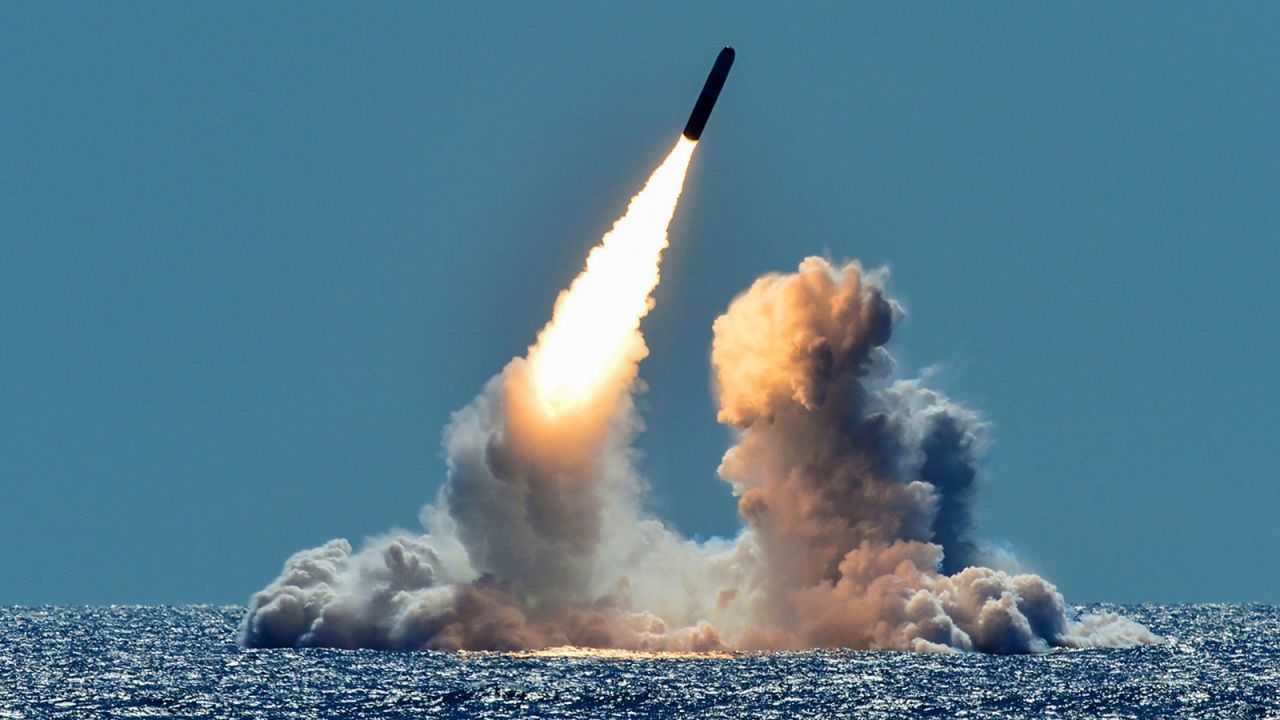Why is the US sending a nuclear submarine to South Korea?

Seoul, South Korea
CNN
—
When the presidents of the United States and South Korea this week announced a landmark deal to deter North Korean aggression, one element of the pact stood out.
Plans to deploy a US nuclear-armed submarine to South Korea for the first time since 1981 were the headline act in the unveiling of the “Washington Declaration,” a set of measures aimed at making Pyongyang think twice about launching a nuclear attack on its southern neighbor.
“Our mutual defense treaty is iron clad and that includes our commitment to extend a deterrence – and that includes the nuclear threat, the nuclear deterrent,” US President Joe Biden said in a news conference at the White House with South Korean President Yoon Suk Yeol.
But while the move has huge symbolic value, some experts question whether it makes sense as a military move. Some point out the subs are quite capable of hitting North Korea from thousands of miles away; others argue that sending the sub on a – very public – foreign port visit only compromises the effectiveness of a weapon designed for stealth.
Here’s what you need to know about the submarine and why it’s heading to South Korea.
The US Navy has 14 Ohio-class, nuclear-powered ballistic missile submarines (SSBNs), with eight based in Washington state and six based in Georgia.
The 560-foot submarines, commonly called “boomers,” have a displacement of more than 18,000 tons when submerged and are each powered by a single nuclear reactor.
The Navy says an Ohio-class sub is designed to spend on average 77 days at sea, followed by 35 days in port for maintenance. The subs have two crews each – dubbed the “blue” and “gold” crews – and these are rotated so the 155 submariners in each crew get proper rest and training between patrols.
Each of the Ohio-class subs carry a maximum of 20 Trident II ballistic missiles.
These have a range of 4,600 miles (7,400 kilometers), meaning they are capable of hitting a target in North Korea from vast swathes of the Pacific, Indian or Arctic oceans.
“Militarily, (these submarines) don’t need to be anywhere near Korea in order to reach potential targets there,” said Blake Herzinger, a nonresident fellow and Indo-Pacific defense policy expert at the American Enterprise Institute.
Each Trident missile is capable of carrying multiple warheads that can be directed toward separate targets.
The Nuclear Threat Initiative at the James Martin Center for Nonproliferation Studies estimates that each Trident missile can carry four nuclear warheads, meaning each US ballistic missile submarine could be carrying about 80 nuclear warheads.
In other words, a single Trident-armed sub could destroy all of North Korea.

Analysts say the presence of a US Navy ballistic missile submarine in a South Korean port would be purely symbolic – and in fact would reduce the military value of the sub.
“Tactically, (the US and South Korea) are diminishing the sub’s most powerful asset; its stealthiness,” said Carl Schuster, a former US Navy captain and former director of operations at the US Pacific Command’s Joint Intelligence Center in Hawaii.
One of the keys to nuclear deterrence is uncertainty.
“Nuclear deterrence requires that, though the adversary knows of the existence and scale of the nuclear state’s weapons, it cannot know the exact extent or location of capabilities or when they might be employed,” US Navy Cmdr. Daniel Post wrote in the US Naval Institute’s Proceedings journal in January.
A US ballistic missile sub lurking hundreds of feet below the ocean’s surface thousands of miles from North Korea would still be within striking range of Pyongyang, but would be near impossible for North Korea to spot.
One arriving in South Korea on a port visit – which must be arranged 24 to 48 hours in advance – would be far more visible, giving North Korea an advantage, Schuster said.
“If Kim Jong Un was looking to do a surprise strike, we’ve given him the submarine’s location and time it will be there,” Schuster said.
The US wants to reassure one of its most important allies that it has their back, analysts say.
Kim Jong Un has been building up North Korea’s nuclear-capable missile forces, testing them at a record rate in 2022. And in a New Year’s Eve speech, the North Korean leader called for an “exponential increase” in his country’s nuclear weapons arsenal in response to what he claims are threats from South Korea and the United States.
Kim’s threats have prompted some in South Korea to call for Seoul to become a nuclear-armed power itself. The US does not want to see nuclear proliferation on the peninsula, so it has been trying to reassure its ally by making its forces more visible in the area, including flying nuclear-capable B-52 bombers in the skies around South Korea.
Kim Jung-sup, senior research fellow at the Sejong Institute’s Center for Defense Studies in Seoul, said the subs just hammer that point home and add to US credibility.
“Of course, they’re different types of weapons, but I don’t think there is an essential difference in the fact that they are strategic assets that fundamentally send a message of nuclear retaliation on North Korea,” Kim said.
As for making the US subs vulnerable, some analysts say that such a scenario would only happen as a precursor to nuclear war – by which point the sub would have already failed in its key mission of deterrence.
“Their fundamental purpose is to deter and reassure,” said Drew Thompson, a senior research fellow at the Lee Kuan Yew School of Public Policy at the National University of Singapore.
“Strategic weapons like a ballistic missile submarine and its payload are not intended to be used.”







